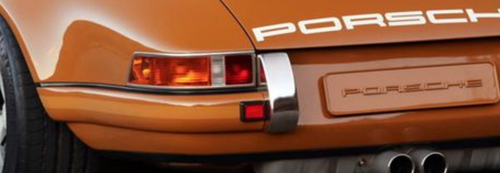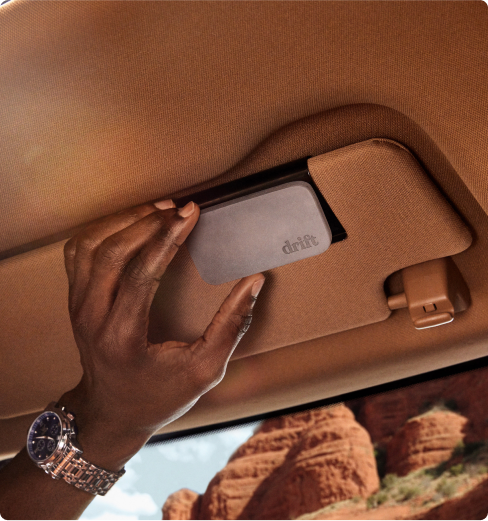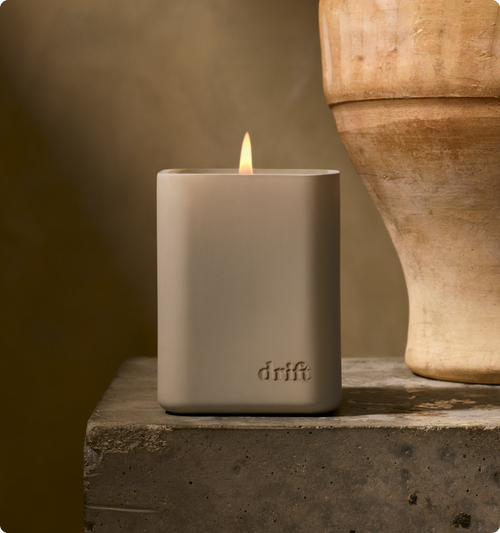
Not every car problem requires a professional mechanic to diagnose and repair. Instead, there are a handful of common car problems you can address yourself, even if you’re not particularly mechanically inclined. Beyond saving money on labor, these DIY repairs can also help you gain confidence in owning and maintaining your vehicle.
12 Common Car Problems You Can Fix Yourself
Skip scheduling repairs at your local dealership or mechanic shop and spend some time in the garage taking care of your vehicle. The dozen car problems below can easily be solved with the right combination of knowledge, time, and replacement parts. Stay tuned for a bonus car problem you can solve with a single monthly subscription to Drift.
1. Dead Battery
It’s almost never convenient to come out to a dead battery, especially when you’re on a tight schedule. At best, it’s easily fixed with a portable battery jump starter that helps bring your car to life. But if your car’s dead battery is due to more than just a vanity light left on overnight, it’s probably time to replace your battery entirely.
However, you can easily fix this problem by catching a ride to and from the auto parts store to purchase a new battery. Safely swapping out these vital components shouldn’t take more than 20 minutes, from disconnecting the battery cables from their respective terminals on the old battery to repositioning them on the new battery before tightening everything down. All that’s left is to give yourself a pat on the back as your vehicle cranks back to life.
2. Worn-Out Wipers
When your windshield wipers squeak across the windshield or leave streaks, it’s time to replace them with a new set. Check with your local auto parts store to find the right size(s) and recommended brand—and don’t forget the back window if your car has a wiper installed there, too. It may take a few minutes to replace the wipers the first time you do it, but after the third or fourth set, you’ll be a pro at this easy repair.
3. Flat Tire
Changing a flat tire is one of the more involved car problems you can fix yourself, but it’s well worth the confidence boost once you get your hands dirty. It’s best to practice the entire procedure when you’re not stressed, parked on the side of the road, or running late, so you can be sure you change the flat safely and properly. If your vehicle doesn’t have a spare tire, learning how to use a patch kit can help you at least limp to the nearest tire repair shop.
4. Dirty or Old Engine Oil
Changing your own engine oil is a task most commonly associated with DIY car repairs, as it allows you to save money for as long as you own the vehicle. With an oil filter, the correct engine oil for your car, a catch pan, and the right tools, you can change your car’s oil in a short period. Recurring oil changes are essential for routine maintenance, which keeps your vehicle running smoothly for many miles to come.
5. Dirty Battery Terminals
Corroded battery terminals can interfere with the power supplied to your vehicle, eventually shortening your car battery’s lifespan. Clean corroded terminals by first disconnecting the battery and then applying a paste made from baking soda and water. Scrub the terminals, rinse thoroughly with water, then wait for the battery to dry completely before reconnecting the battery cables.
6. Chipped Paint
Paint chips often occur when pebbles and other small road debris contact your vehicle’s exterior panels. It’s essential to address paint chips promptly, as the unprotected surface can rust if left untreated. Dealerships typically stock factory touch-up paint, but you can also order the correct color online from various retailers.
7. Smelly or Clogged Air Filters
Most vehicles have two air filters: one in the engine bay and one that filters air directed into the cabin. Over time, these filters can become clogged and, in the case of your car’s cabin filter, begin to smell. Replacing both filters ensures the engine and your car’s occupants breathe in fresh, filtered air.
You can also boost that clean gulp of oxygen with a luxury car freshener from Drift. Attach the Metal car freshener to the vent clips or slip the Wood or Stone car freshener onto the driver's or passenger’s side visor. Create your own custom car scents by mixing and matching our signature blends.
8. Worn-Out Brakes
Swapping your car’s brake pads and rotors takes a bit longer than your average oil change—especially the first few times you do it. However, it’s one common car problem you can fix yourself for much less than you’d pay a mechanic. Once you learn how to do one side, the other is just the reverse of that.
9. Burnt-Out Light Bulb
There are multiple small light bulbs in and around your vehicle, from those that illuminate your license plate to the vanity lights you rely on when looking in the mirror. It might take a few screwdrivers or wrenches to access the old bulb to remove it, but replacing it is often the easiest part of the job.
10. Lack of Air Conditioning
You don’t have to face 90-degree days without air conditioning if your car suddenly no longer blows out chilled air. Instead, you can purchase an A/C recharge kit and recharge the system yourself for much less than you’d pay to have it done professionally.
11. Worn Spark Plugs
Swapping out your car’s spark plugs is nearly as important as changing the oil, especially if you want the engine to perform to its fullest potential. Spark plug sockets make removing the plug easier, as breaking the plug can turn this simple DIY repair into a significant problem that requires professional assistance. Follow the manufacturer’s recommendations regarding spark plug replacement.
12. Dirty/Old Brake or Power Steering Fluid
As brake and power steering fluids age, they break down over time. Removing the old fluid with a turkey baster can be tedious, but it can also save you a ton of money when the fluid needs to be replaced. Just be sure to replace each fluid with the correct type for your vehicle.
When to Seek Help from a Professional Mechanic
Taking the DIY approach when tackling car problems can help you save money and time. However, there’s a point where letting the professionals take over can actually do you—and your car—more good. Below are situations when it’s best to leave car repairs up to a trusted mechanic:
-
The repairs require more technical knowledge than you possess
-
The problem you “fixed” returns—quickly
-
You don’t have (or can’t rent or borrow) the proper tools
-
The repair involves more than one system, including the electrical system
Distinguishing between car repairs you can do yourself and those that require a professional often comes with a learning curve. However, there’s still one way you can enhance your vehicle without having to scrape your knuckles or break your budget. Drift luxury car fresheners turn any vehicle interior into a scentscape worthy of the finest cars on the road.
Solution to Foul Vehicle Odors: Custom Car Scents from Drift
It’s natural for cars to take on an unpleasant smell after a certain period, especially if you’re frequently behind the wheel and on the road. Tap into an easy fix through the Scent of the Month Club with Drift signature car fresheners that feature new custom car scents every month. It’s the most affordable and rewarding way to enhance your vehicle without picking up a single wrench or ratchet.




